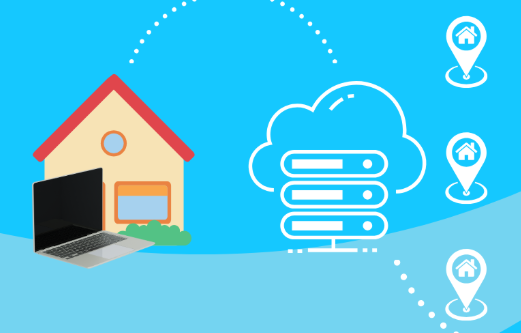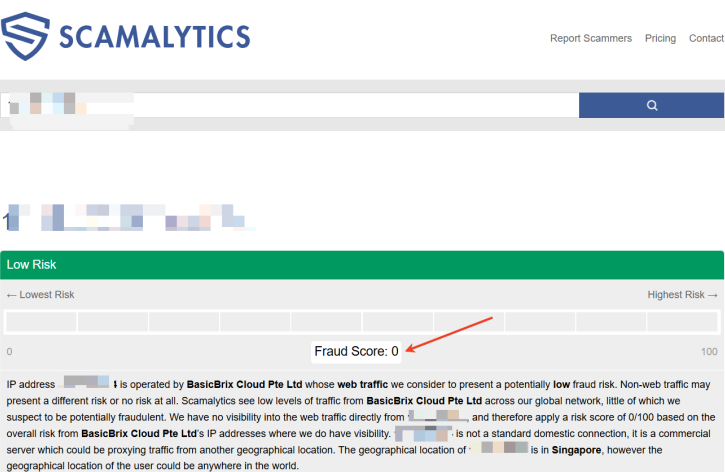In operations, marketing, or social media promotion, a stable and controllable account environment is crucial. Many novice operators find that their accounts face issues like bans, demotion, or verification failures right after launch. One of the most common reasons for this is abnormal IP environment.
This article focuses on residential IP proxies—explaining why they are essential during account nurturing, which scenarios they suit, how to select and use them, and providing you with a practical “guide to stable account nurturing”.
I. Why Use Residential Proxies During Account Nurturing?
- Easier to simulate real user behavior: Using a residential IP makes it look like “a user accessing the internet at home”, which is more “authentic” than data center IPs. This reduces the risk of the account being identified as an “abnormal user”.
- Lower the risk of platform bans and restrictions: For example, in social media operations, if you use a data center IP for a long time, the platform may identify it as “bot behavior” or “proxy usage”, leading to IP bans or account restrictions. Overseas residential IPs can “effectively prevent IP bans and reduced account visibility”.
- Geographic diversity and abundant IP resources: For operations, you may need IPs from different countries or cities to simulate users in your target market. Residential IPs have a clear advantage in terms of geographic diversity.
- Safer during the account nurturing cycle: During sensitive periods such as account registration, initial launch, and first-time platform operations (e.g., binding a phone number/email, uploading materials, first post), using residential IPs can improve account stability and reduce the risk of triggering platform alerts.
From account registration → initial operation → growth stage, using residential IPs acts as an “insurance” tool to minimize risks and enhance stability.

II. How to Select and Use Residential IP Proxies for Account Nurturing?
1. Key Criteria for Selecting Residential IP Proxies
(1) IP Source and Purity
Prioritize IPs assigned from “home broadband” or “real residential network segments” instead of commercial data center IPs—residential IPs are more similar to those used by ordinary users.
You can use an IP detection platform to check the risk level of the IP. Also, verify if the provider guarantees “exclusive IPs (one IP per customer)” or the lowest IP reuse rate.
As shown in the example below, an IP with a risk level of 0 indicates high purity and good quality.

(2) Geographic Coverage and Targeting Capability
If your target market is in Southeast Asia, Europe, the United States, etc., prioritize IPs that cover those countries/cities.
It is even better if the service supports geographic targeting (selecting IPs by country/city/region).
(3) Stability and Network Quality
While residential IPs are not as fast as data center IPs, “stability”, “connectivity”, and “no abnormal fluctuations” are more important during account nurturing.
Avoid low-quality IPs with high fluctuations or frequent disconnections—these will instead arouse the platform’s suspicion.
(4) Switching Mechanism and Session Persistence
Although “frequent IP switching” may seem like a way to avoid detection, in the early stage of account nurturing, stably and continuously using the same residential IP/regional IP is more in line with “real user behavior”.
It is a plus if the provider supports “session persistence” (keeping the same IP for a certain period).
(5) Protocol Support and Security Assurance
Support for HTTP(S) and SOCKS5 protocols ensures compatibility with different tools.
Check if the service provider offers security guarantees such as encryption, clear logging policies, and KYC compliance. Avoid free or untrusted proxies—they may cause your account to be penalized by the platform due to IP security issues.
Recommended Tool:
If you are looking for a platform specializing in residential IP proxy services, we recommend the residential IP proxy service provided by IPFoxy, which fully meets the criteria of a high-quality IP proxy provider mentioned above:
- IPFoxy offers original residential IPs with real home network environments, high purity, and strong anonymity. These IPs are difficult for platforms to identify, making them ideal for e-commerce/social media account nurturing.
- It covers over 200 countries/regions, including major overseas markets such as North America, Europe, and Southeast Asia. It supports country/city-level targeting, enabling more authentic simulation of local user environments.
- It allows the same IP to stay online for a long time, with stable network connectivity and low fluctuations—especially suitable for the cold start and nurturing stages of accounts.
- It is compatible with multiple protocols and works with browsers, fingerprint environment tools, and automated systems. Meanwhile, it has a comprehensive security mechanism to avoid account bans caused by “black proxies”, “logging risks”, and “low-quality routes”.
For the new account nurturing stage, use IPFoxy directly: start with a basic package or a free trial, and expand the scale only after confirming stability. This approach is both secure and effective in improving account survival rates.

2. Practical Process for Using Residential IP Proxies in Account Nurturing
Phase A: Account Registration
- Select a residential IP corresponding to your target market (e.g., use a U.S. residential IP for the U.S. market).
- Ensure the IP’s country matches the account information, phone number, and payment method.
- First, complete email binding → phone number binding → identity/profile completion to simulate the behavior of a real new user.
- After registration, use the same residential IP stably for at least 24–48 hours. Do not switch IPs frequently; keep the login traces, device environment, and network environment consistent.
Phase B: Account Nurturing & Operation
- Maintain a consistent network environment: Continue using the same residential IP segment to simulate a long-term local user.
- Perform a small number of daily operations: Browse content > Like and comment > Minimal interactions > Publish low-volume content.
- Control the pace: Avoid transforming “from a new user to a KOL overnight”.
- Align behaviors with the real habits of the target region:
- U.S. accounts → Go online during the Eastern Time Zone (ET).
- Southeast Asian accounts → Be active during local noon and evening peak hours.
Key Points for Multi-Account Operations
Account matrix = IP isolation + Device isolation + Cookie isolation. Each account should have an independent residential IP + fingerprint browser to ensure a pure, clean, and non-overlapping environment.
- Use a fingerprint browser to simulate real device fingerprints (system, resolution, font, Canvas, WebRTC, etc.).
- Do not share the same IP or device fingerprint across accounts targeting different regions.
Switching Principle
- If you need to switch IPs → Switch gradually; do not cross continents.
- Avoid scenarios like “Asia today, the U.S. tomorrow, Europe the day after”—this is a clear sign of an abnormal account.
Phase C: Post-Launch Stability
- Use residential IPs as the main operating environment for long-term stability.
- Continue the strategy of independent environments for each account.
- Before running ads, launching campaigns, collaborating, or logging in across platforms, ensure the IP matches the account’s region.
- If expanding the account matrix → First increase the number of IPs, then slowly add more accounts.
- Monitor account metrics: If you receive abnormal alerts (e.g., login verification requests, regional anomalies, frequent logouts), check for changes or issues in the IP environment as soon as possible.
Conclusion
The account nurturing stage is critical for account growth. A stable environment and authentic operations are the foundation for building healthy accounts. As a network environment tool that mimics real users, residential proxies have become the first choice for many account operators due to their lower detection risk, stronger geographic simulation capabilities, and suitability for long-term operations.


